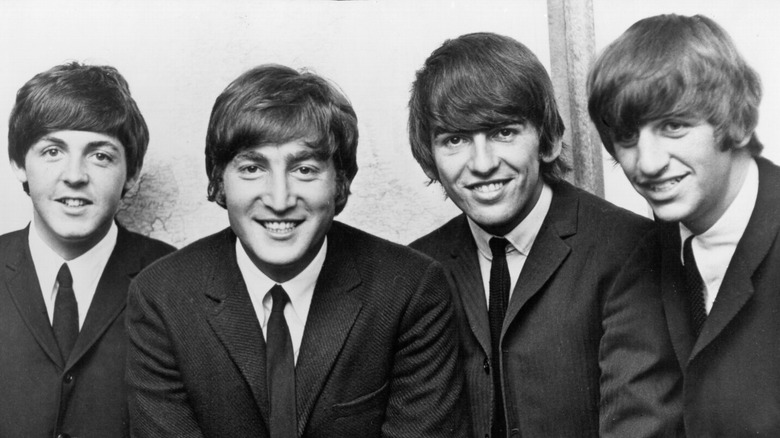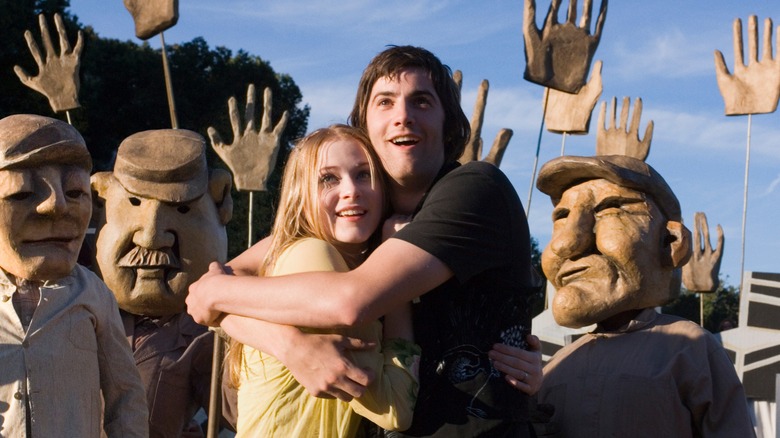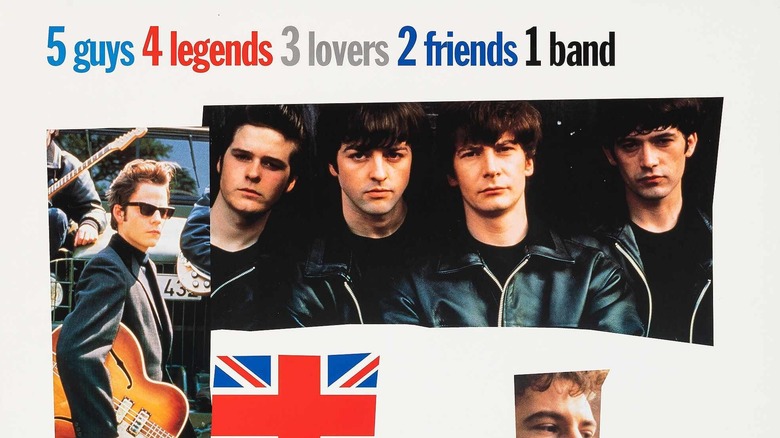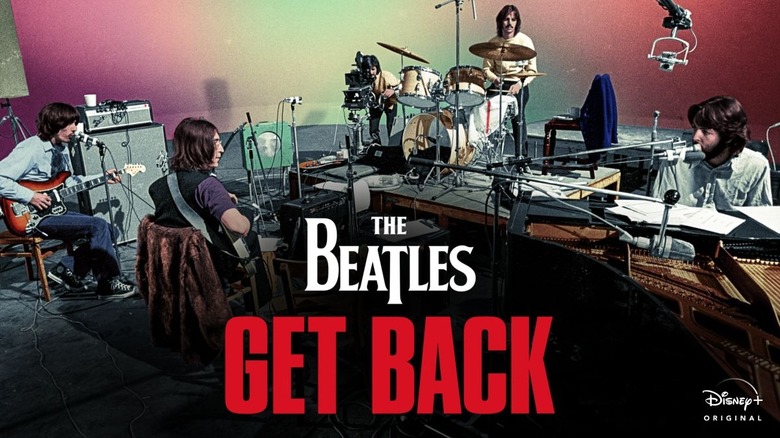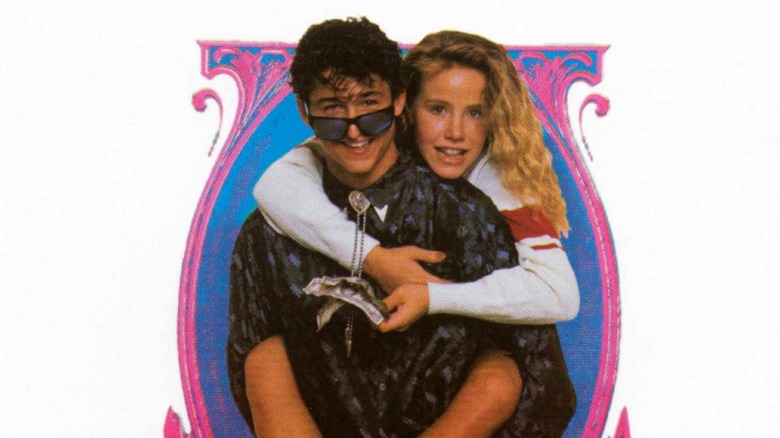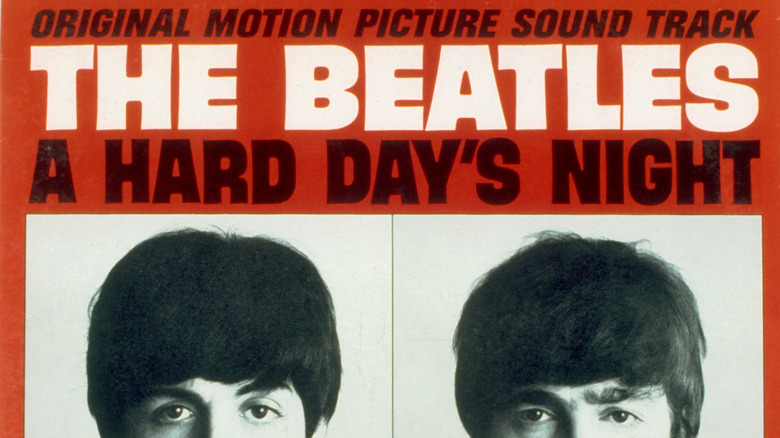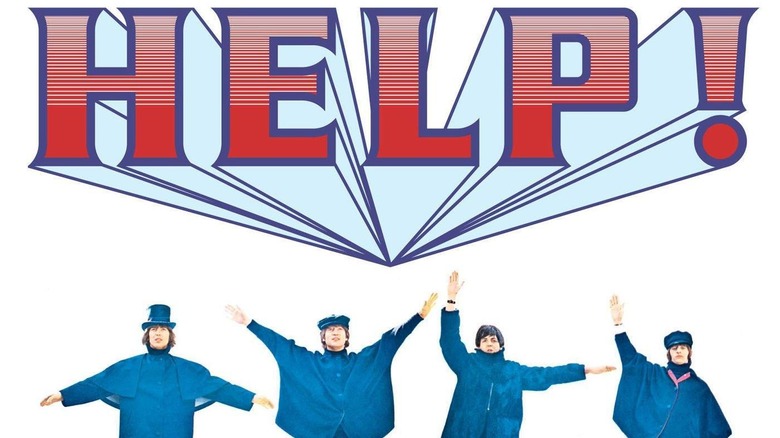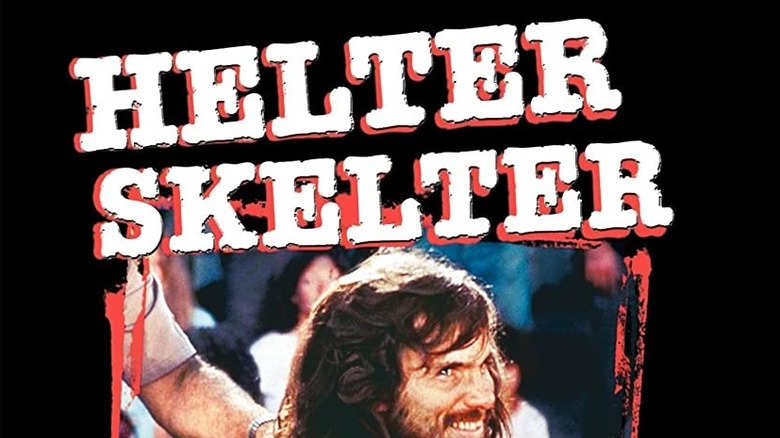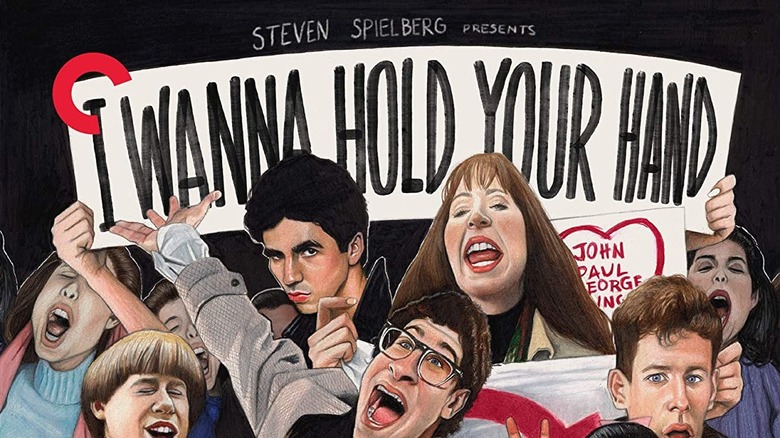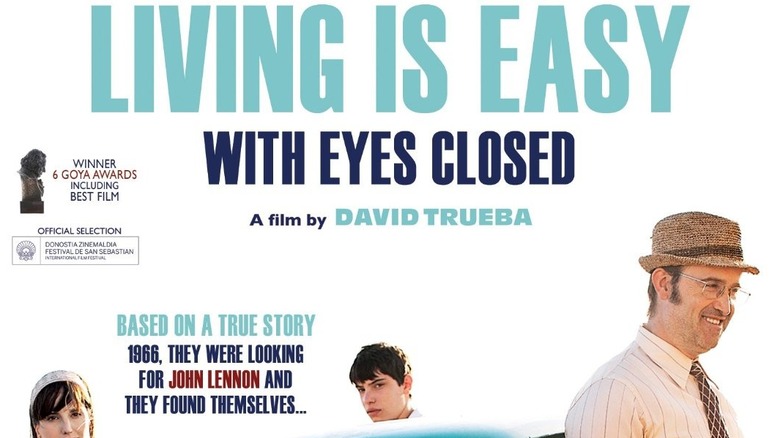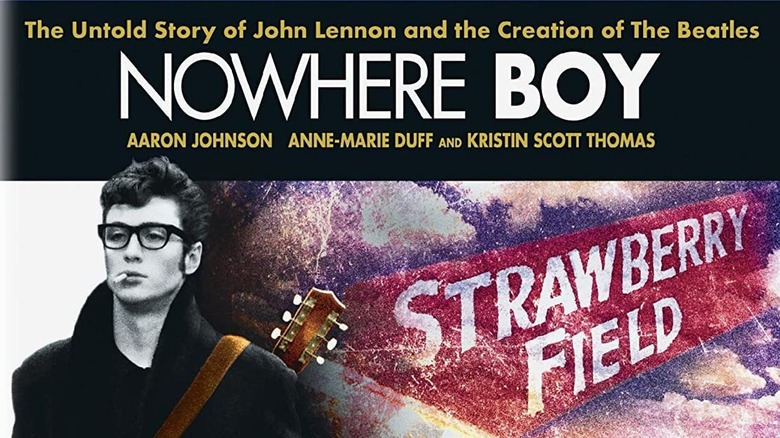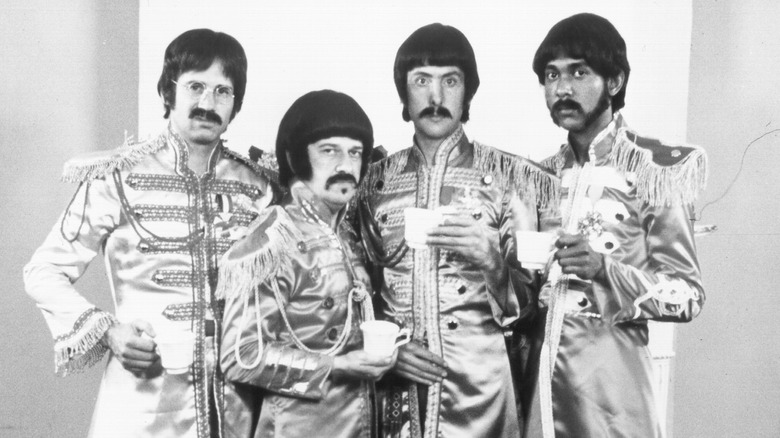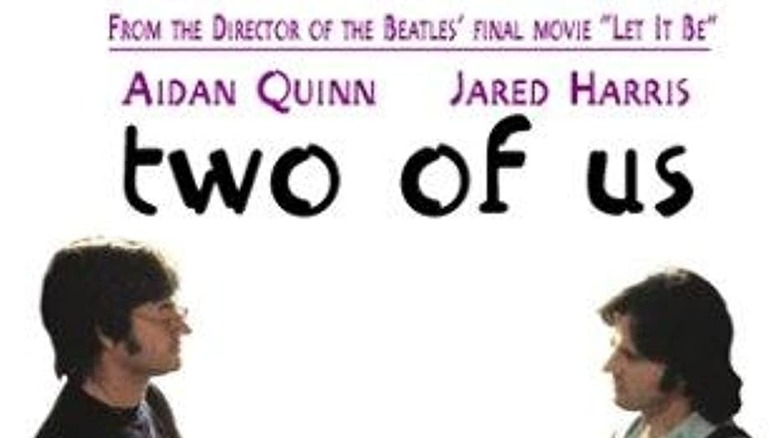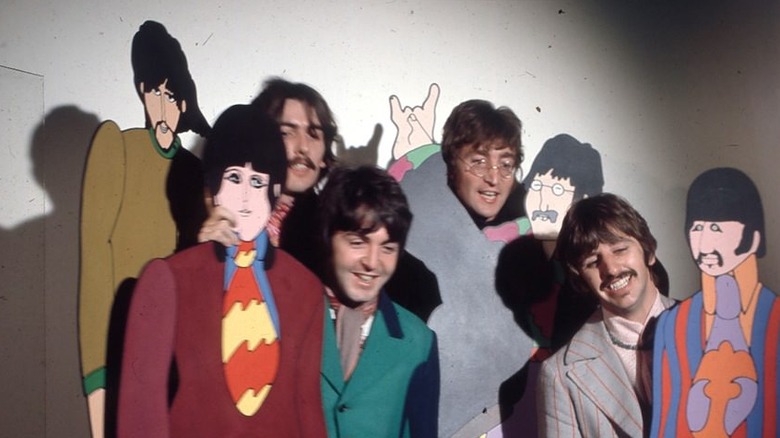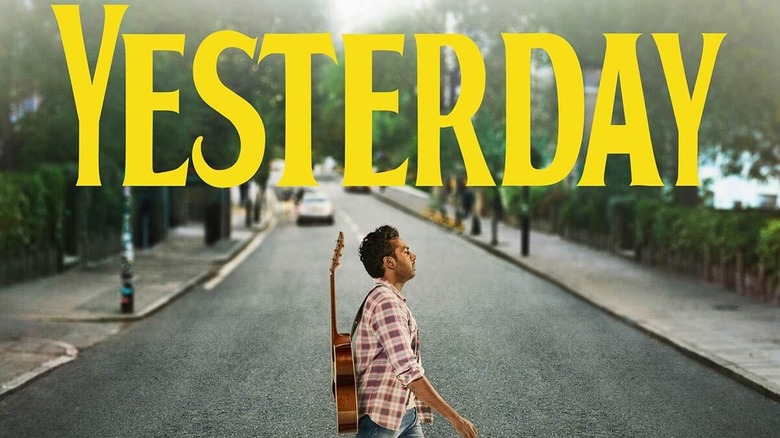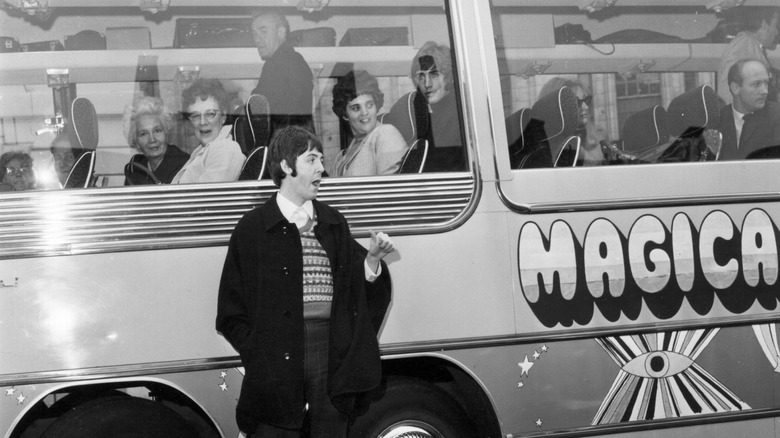Best Movies Inspired By Beatles Songs
Long before Peter Jackson's "Get Back," the Beatles were not only a phenomenon like none other in the world of music, but in the world at large as well. John Lennon, Paul McCartney, George Harrison and Ringo Starr's innovations and contributions have influenced musicians ever since, and continue to gain them new adoring fans as one generation passes to the next. Their impact can be seen, heard, and felt well beyond music — in humor, fashion, politics, religion and film.
The Fab Four have inspired so many, and their catalogue of over 200 songs has inspired filmmakers to use their music here, there and everywhere. There are plenty of movies about the Beatles, but let's take a look at the best ones that were inspired by them. In most cases, these movies reiterate that all you need is love — and in others, some money and/or murder. In a few more instances, the Beatles' music even inspired their own films.
Across The Universe (2007)
Director Julie Taymor used 33 Beatles songs in this narrative whirlwind of a '60s tale where "the music and the film would not just reflect the microcosm of a character's experience," she explained, "but, from my perspective, would also represent the macrocosm of the events that are happening in the world."
Characters with familiar names like Jude, Lucy, Prudence and Jo-Jo take us on a magically, mysterious tour, while Beatles jukebox-singing their way through 2007's "Across The Universe," named after the 1969 song John Lennon was "possessed" to write. Taymor hoped her film would speak "across the universe and across cultures ... that anybody could identify with the situations and the events that are happening in this movie."
"Across The Universe" was not a box office success, but has since developed something of an adoring audience, even sparking talk of a sequel. When Taymor asked McCartney about the film, he said to her, "what's not to like?"
Backbeat (1994)
In their formative years and Outlier days spent in Hamburg Germany, the Beatles honed their own sound by playing covers of those they idolized: Buddy Holly, Little Richard, Elvis, and Chuck Berry. They loved Berry's "Rock and Roll Music" so much that they later recorded it for inclusion on their 1964 album "Beatles For Sale."
The lyric in the Berry song, "it's got a backbeat, you can't lose it" helped director and co-writer Iain Softley land a title to his 1994 film about the relationships between John Lennon, his best friend and bandmate Stuart Sutcliffe, and his German girlfriend photographer, Astrid Kirchherr. Softley told Fresh Air that "Backbeat" was not only a love story, but "a story about people making decisions about what they want to do with their lives, and what they have to give up in terms of relationships to sometimes get what they want."
The soundtrack, recorded by modern rock stars of the time, contained no Beatles songs. As Softley said: "The idea of this band doing covers of other people's songs, their heroes, puts us in their shoes."
The Beatles: Get Back / Let It Be (2021/1970)
After the death of their manager Brian Epstein in 1967, The Beatles lost their focus and the once tight knit group began to show signs of fracture. In the hopes to "Get Back" to where they once belonged (a song they "made it up out of thin air"), they re-teamed with director Michael Lindsay-Hogg in 1969 to capture, as McCartney said, "The Beatles rehearsing, jamming, getting their act together and then finally performing somewhere in a big end-of-show concert."
Lindsay-Hogg and crew filmed over 50 hours of footage, including the denouement of the band performing on a rooftop (their last ever live gig), retitled the project "Let It Be" (from the song that came to McCartney in a reassuring dream featuring his Mother Mary), which was eventually released a year later, right as the band called it quits. History and memory hasn't been kind to Lindsay-Hogg's Academy Award winning documentary, as it's been labeled a break-up movie, but director Peter Jackson helped change that perception with his take on the material, 2021's "Get Back." His 8 hour, 3 part documentary, as both Ringo and McCartney said recently, reminds us of "the joy" the band had together during those notorious recording sessions (and producer Glyn Johns' amazing wardrobe).
Jackson told The Independent that when he pulled "the veil away and you see the unvarnished truth" it presented "the opportunity to think of them as human beings." Lindsay-Hogg didn't participate in Jackson's doc, but gave his blessing, as he told Variety, "It's like mine was a short story and his was a full-length novel. They each have different qualities, but I feel both can exist together."
Can't Buy Me Love (1987)
Michael Swerdlick's screenplay, "Boy Rents Girl" caught the eye of director Steve Rash, but when it moved forward at Disney, then-CEO Michael Eisner suggested they change the title to "Can't Buy Me Love."
McCartney wrote that 1964 song to say "that all these material possessions are all very well, but they won't buy me what I really want," which perfectly suited the Patrick Dempsey-starring teen romantic comedy that saw him go from "totally geek to totally chic" by essentially renting popular girl Amanda Paterson, but ultimately feeling unfulfilled.
Rash told The Morning Call that "surprisingly, in our informal research, kids have no idea that that's ['Can't Buy Me Love'] a song, much less a Beatles' song. It's amazing." The cost to license the song from then-owner Michael Jackson was reported to be about $100,000, which made up a substantial amount of their almost $3 million budget.
Fun fact: The big "African Anteater Ritual Dance" was choreographed by Paula Abdul, and people still ask Patrick Dempsey to "do the dance."
A Hard Day's Night (1964)
Deep into production of the Beatles' first foray into film, they didn't have a title, as producer Walter Shenson recalled to writer Jerry Osborne — that is, until he had a chance conversation on set with John Lennon that made his "day."
There is some debate as to the origin of the phrase "A Hard Day's Night," but Lennon set the record straight himself: "I had used it in [Lennon's 1964 book] 'In His Own Write,' but it was an off-the-cuff remark by Ringo, one of those malapropisms — a Ringoism — said not to be funny, just said." Osborne got all four Beatles and director D. Lester to sign off on it as the title of the movie.
Shenson then asked Lennon to come up with the title track for the freewheeling, black and white 1964 landmark film and soundtrack, and he returned the next morning with it. Shenson told Osborne, "I got a hit song on demand! That's almost impossible. And it was one of their biggest hits ever." "Hard" to imagine the movie that perfectly captured Beatlemania and the band's charm without that opening chord.
Fun fact: George Harrison met his first wife Pattie Boyd (who later inspired "Something") on the set of this film, where she played a schoolgirl; Phil Collins appeared as an extra.
Help! (1965)
Director Richard Lester and the Beatles' follow-up to "A Hard Day's Night" was also in need of assistance in the title department. In conversation with Steven Soderbergh in the book "Getting Away With It," Lester said "Help, Help," "Beatles Two," and "Eight Arms To Hold You" were all in the running, before they settled on "Help!," with that exclamation included to avoid someone else's copyright.
The title inspired the song, which Lester said they conjured up "twenty-five minutes later," and had Lennon later saying, "I knew I really was crying out for help. So it was my fat Elvis period. And I am singing about when I was so much younger and all the rest, looking back at how easy it was."
The first film was about being chased by fans, and in "Help!" it was by a cult out to get a rare ring of Ringo's. While the 1965 film was literally all over the map, as they "were smoking marijuana for breakfast," it still is an important work, and to Soderbergh, "the birth of what I consider to be modern color cinematography."
Helter Skelter (1976)
In his biography, McCartney said he used the spiral slide amusement ride "Helter Skelter" (whose name dates as far back as 1592) as a symbol of, "the rise and fall of the Roman Empire." He added that it has "since taken on all sorts of ominous overtones because Manson picked it up as an anthem" which he twisted into some sort of demented soundtrack for the horrific Tate-LaBianca murders of 1969.
Charles Manson made his followers believe that the Beatles "were speaking to him across the ocean through the lyrics of their songs," including their "Helter Skelter," which Los Angeles District Attorney Vincent Bugliosi told the court in Manson's trial, "meant the black man rising up and destroying the entire white race." After the trial, Bugliosi co-wrote the 1974 best selling book "Helter Skelter: The True Story of The Manson Murders," which was turned into a two-night TV movie in 1976 that broke records as the most watched made-for-TV movie ever.
"Helter Skelter" captivated America with a staggering 60% of TV sets tuned to it (even with some affiliate stations refusing to air it), edging out The Academy Awards for eyeballs. Director Tom Gries wanted the film to be a "warning signal for parents," and to "make a case in favor of capital punishment." The messages were certainly received, and the made-for-Tv movie also led to a resurgence in interest and sales of "The White Album."
I Wanna Hold Your Hand (1978)
Before director Robert Zemeckis and his screenwriting partner Bob Gale sold "Used Cars" or went "Back to The Future," they made their own "American Graffiti" centered around the "Beatlemania" that swept America in 1964. Unable to use "Beatlemania" as a title, they made a movie that centered around the Beatles' watershed televised appearance on "The Ed Sullivan Show," as Gale simply described to Rolling Stone "about girls waiting in line to see the Beatles ... 'Waiting for Godot' but at a concert."
The Beatles never appear in the film, and Zemeckis and Gale got lucky, "thanks to Steven Spielberg," that they landed at Universal Studios, who owned Capitol Records, which controlled the recording rights to their songs at the time. One of those, the group's first #1 hit in America, "I Want To Hold Your Hand," had part of its name informally contracted to give the Zemeckis fever-pitched film its name, "I Wanna Hold Your Hand."
Living Is Easy with Eyes Closed (Vivir es fácil con los ojos cerrados) (2013)
Spaniard Juan Carrion was an English teacher who incorporated the songs of the Beatles into his classroom's lessons. When, in 1966, he found out that John Lennon was shooting the film "How I Won The War" in Almería, Carrion sought him out and convinced Lennon to print their lyrics on their albums, which actually did happen thereafter.
It was in Almería where Lennon also worked on "Strawberry Fields Forever," which took its name from "a place near us [in Liverpool] that happened to be a Salvation Army home." The line in the song "Living Is Easy With Eyes Closed" lent itself to the title of the 2013 David Trueba film, "Vivir es fácil con los ojos cerrados." The winner of six Goya Awards, including Best Picture, "Living" fictionalized Carrion's Quixotic mission to meet Lennon as a road movie.
Trueba told the Miami New Times that he wasn't interested in making a biopic, but "wanted to make a more universal film, relating to all the teachers that were like that ... who were in the same kind of fight against society at that time in Spain."
Norwegian Wood (ノルウェイの森) (2010)
John Lennon's 1965 "Rubber Soul" entry "Norwegian Wood" was about an affair he was having. McCartney helped to flesh out the lyrics and title in his biography, revealing "it was a little parody really on those kind of girls who when you'd go to their flat there would be a lot of Norwegian wood."
Author Haruki Murakami borrowed the song for the title to his 1987 novel about a young Japanese man who experiences loss and love in the turbulent 1960s. Tran Anh Hung directed a touching 2010 movie version, and was able to license the original recording. Hung told Screen Daily that they "placed it in a very particular place in the film to create a space of memory, for clarification and resonance of the drama that the audience has just experienced."
Radiohead's Jonny Greenwood scored the film, and was happy they were able to use the Beatles version, as he made a cover version of "Norwegian Wood" just in case, which he admitted wasn't "very good."
Nowhere Boy (2009)
John Lennon was once "trying to think of a song," and "nothing would come," and then thought of himself "as 'Nowhere Man' — sitting in his nowhere land." In 2009, Sam Taylor-Johnson directed "Nowhere Boy," which looked back on Lennon's topsy-turvy, rebellious adolescence in Liverpool. Matt Greenalgh's script was based off of John's sister Julia Baird's book, "Imagine This: Growing Up With My Brother John Lennon," and he told the Telegraph, "I felt it wasn't even about John Lennon, it was about a boy searching for his mother."
Lennon was passionately played by 18-year-old up and comer Aaron Taylor-Johnson, whose own passions flared offset with his director, 23 years his senior; now married, they have two children. Age may not make a difference, but size matters. Paul McCartney told the Telegraph he was "peeved" that the actor who portrayed him, Thomas Brodie-Sangster, was shorter than Taylor-Johnson's Lennon, saying he and John were the same size, and they should have at least "put me in platforms!"
The Rutles: All You Need Is Cash (1978)
British funnymen Eric Idle and Neil Innes (who appeared in "Magical Mystery Tour") had done parody sketches of The Beatles as The Rutles for "Rutland Weekend Television," starting in 1975. When Idle hosted "Saturday Night Live," Lorne Michaels was so impressed with these "Prefab Four" sketches that he greenlit a full length TV rock-mockumentary movie, 1978's "All You Need Is Cash," named after the Beatles 1967 flower powered hit "All You Need Is Love."
Innes cobbled together 20 solid parody songs ("Help!" became "Ouch!"), and with a little help from their friends (John Belushi, Bill Murray, Dan Aykroyd, Gilda Radner, Mick Jagger, and Paul Simon) created one of the ultimate send-ups and valentines to The Beatles, taking viewers on a journey from "A Hard Day's Rut" to the "Tragical History Tour." George Harrison also made a cameo, and told Rolling Stone in 1979 that "in the end the Beatles for the Beatles is just tiresome; it needs to be deflated a bit, and I loved the idea of the Rutles taking that burden off us in a way."
Two of Us (2000)
Saturday Night Live's Lorne Michaels famously offered the Beatles $3,000 to reunite on a 1976 episode, and John and Paul were actually together in New York that night and considered going down to the studio. This rare post-break-up meeting between the songwriting duo lent itself to a 2000 VH1 movie titled "Two of Us," starring Jared Harris as Lennon and Aidan Quinn as McCartney. The movie took its title from the song on the "Let It Be" album, but writer Mark Stanfield told Newsday that it also refers "to the fact that they are just two of us ordinary people who have been through these things together, two very different people trying to find some commonality and a way to work it out."
"Let It Be" may have signaled the end of The Beatles, but not for director Michael Lindsay-Hogg's involvement in chronicling their lives. Hogg had turned down many Beatles-related projects in the decades since, but was impressed by Stanfield's ability to capture Lennon and McCartney's spirit and rapport. He also liked how it wasn't really about The Beatles, but an intimate "story about friendship, a story about what happens when we grow up."
Yellow Submarine (1968)
After "A Hard Day's Night" and "Help!," The Beatles had no interest in fulfilling their contract with United Artists by making a third film. Re-enter American producer Al Brodax, who previously created an eponymous Saturday morning cartoon based on the Fab Four that ran for 3 seasons. He pitched the Beatles on an animated feature where they wouldn't even need to provide their voices.
According to Brodax, Ringo Starr was the one who suggested using 1966's "Yellow Submarine" as the title, "a children's song, a kind of a ditty, a nonspecific lyric that could go anywhere." The Beatles contributed to the soundtrack, and were impressed by the project enough that they decided to appear on screen in the film's final scene.
Pixar founder John Lasseter said the 1968 film "was a real shot in the arm for animation," adding that it was a "a pathbreaker in a movement that brought new forms of animation to audiences of all ages." Roger Ebert compared it to "Fantasia," saying it's "a music-based animated film for the ages."
Yesterday (2019)
Jack Barth co-wrote a script called "Cover Version," with quite the "what if" ... the music of the Beatles never existed, except one musician who remembers their songs and attempts on his own to become bigger than Jesus? The idea fell into the hands of Richard Curtis, who wrote his own take and teamed up with director Danny Boyle to make 2019's fantastically hypothetical fun "Yesterday," starring Himesh Patel, Lily James, Ed Sheehan and his "Hey Dude" suggestion.
The filmmakers made sure they could clear the rights to make "cover versions" of the Beatles songs before moving forward. At first, McCartney thought it was "a terrible idea,' but signed off on letting them use "Yesterday," one of the most recorded songs of all time, as the film's title. The original song came to McCartney in a dream and began life with the working title "Scrambled Eggs." Boyle related to Outtake that McCartney told him, "If the film's a mess, maybe 'Scrambled Eggs' would be a better title than 'Yesterday'?" No need, as Sir Paul snuck into a screening, giggled at times and "loved it."
Magical Mystery Tour (1967)
Okay, this one's cheating a bit, because it's not really on anyone's "best of" anything list; but it is still worth remembering. Producer George Martin summed up the Beatles' 1967 TV film "Magical Mystery Tour" as "not really a success — in fact, that's putting it mildly." The genesis for the disappointing film project came from John and Paul's recollection of mysterious "charabanc" tours of their youth, and "getting on a bus and not knowing where you were going. Rather romantic and slightly surreal!" McCartney recalled, adding, "so we took that idea and used it as a basis for a song and the film."
McCartney worked up the psychedelic concept of this riff on Ken Kesey and the Merry Pranksters, and recorded the title theme song in April of 1967, before filming began that September — with not much of a plot, other than song lyrics. Paul told David Frost, "we'd put together a lot of things that we like the look of, and see what happens. I liked it." Many fans and critics did not, as the meandering, kaleidoscope-colored film aired in black and white on BBC, but its lasting legacy are the songs and the forerunning music videos contained within, like for "I Am The Walrus" and "Your Mother Should Know" ... and inspiring the band name Death Cab for Cutie.
